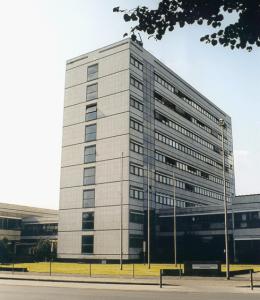
|
Bielefeld-Münster Seminar onGroups, Geometry and TopologyTuesday, July 15, 2025. |

|
Talks:
- 10:15 Olga Varghese (Münster) Profinite properties of Dyer groups
- 11:45 Lei Chen (Bielefeld) Vertex-primitive s-arc-transitive digraphs of almost simple groups
- 14:30 Sruthy Joseph (Münster) Condensed abelian groups and dualities
Abstract: We give a visual characterization of virtually free Dyer groups and show that virtually free Dyer groups of small rank can be distinguished by their finite quotients.
11:15: Coffee break
Abstract: The investigation of s-arc-transitivity of digraphs can be dated back to 1947 when Tutte proved that a cubic graph can be at most 5-arc-transitive. Then in 1981, Weiss proved that the general upper bound on s is indeed 7 for all the graphs, making a stark contrast with the situation of digraphs. In 1989, Praeger showed that s can be arbitrarily large if the action on vertices is imprimitive. However, the situation is completely different when the digraph is vertex-primitive and not a directed cycle. In 2017 Giudici, Li and Xia constructed the first infinite family of G-vertex-primitive 2-arc-transitive examples, and asked if there is an upper bound on s for G-vertex-primitive s-arc-transitive digraphs that are not directed cycles and guessed that the upper bound should be 2. In 2018 Giudici and Xia showed that if there is a largest such value of s then it will occur when G is almost simple. My project was to prove that the upper bound on s for different kinds of almost simple groups is indeed 2. So far, I have verified the conjecture for symplectic groups, the small and the large Ree groups, Suzuki groups, G2(q), 3D4(q), E6(q), 2E6(q), F4(q) and the alternating groups.
12:45 Lunch break
14:00 Coffee break
Abstract: Condensed mathematics was developed by Dustin Clausen and Peter Scholze to address difficulties in doing algebra on algebraic structures that carry a topology. For instance, we cannot do homological algebra in the category of topological abelian groups because it does not form an abelian category. This necessity has given rise to the category of condensed abelian groups, which forms an abelian category. In the first half of the talk, I am reformulating the definition of condensed sets in the language of Boolean rings using Stone duality. The second half focuses on discussing the properties of the category of condensed abelian groups. I also propose a candidate for the Pontryagin dual of a condensed abelian group and demonstrate why this choice of dual does not satisfy Pontryagin duality in the category of condensed abelian groups.
Picture of the seminar.
